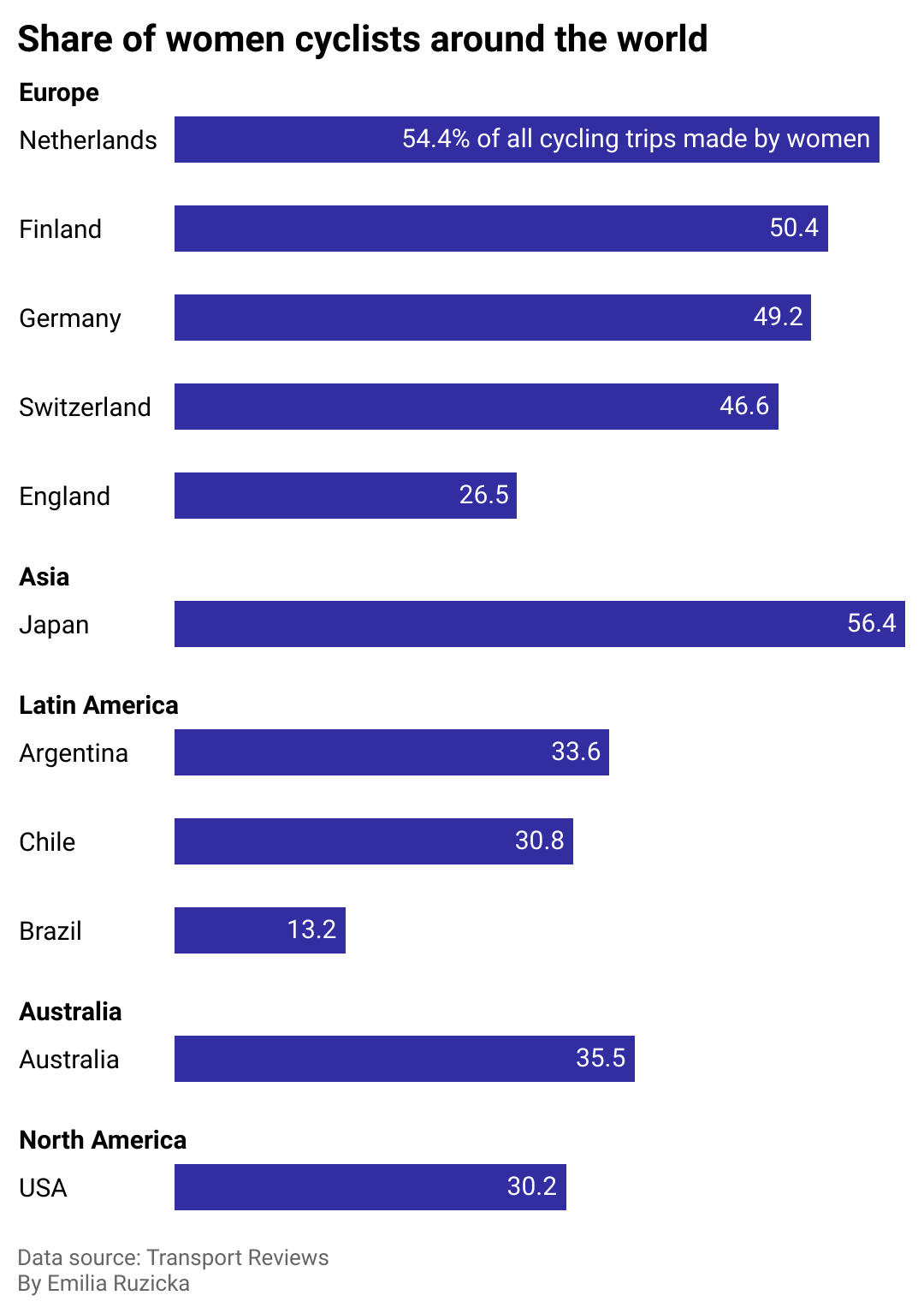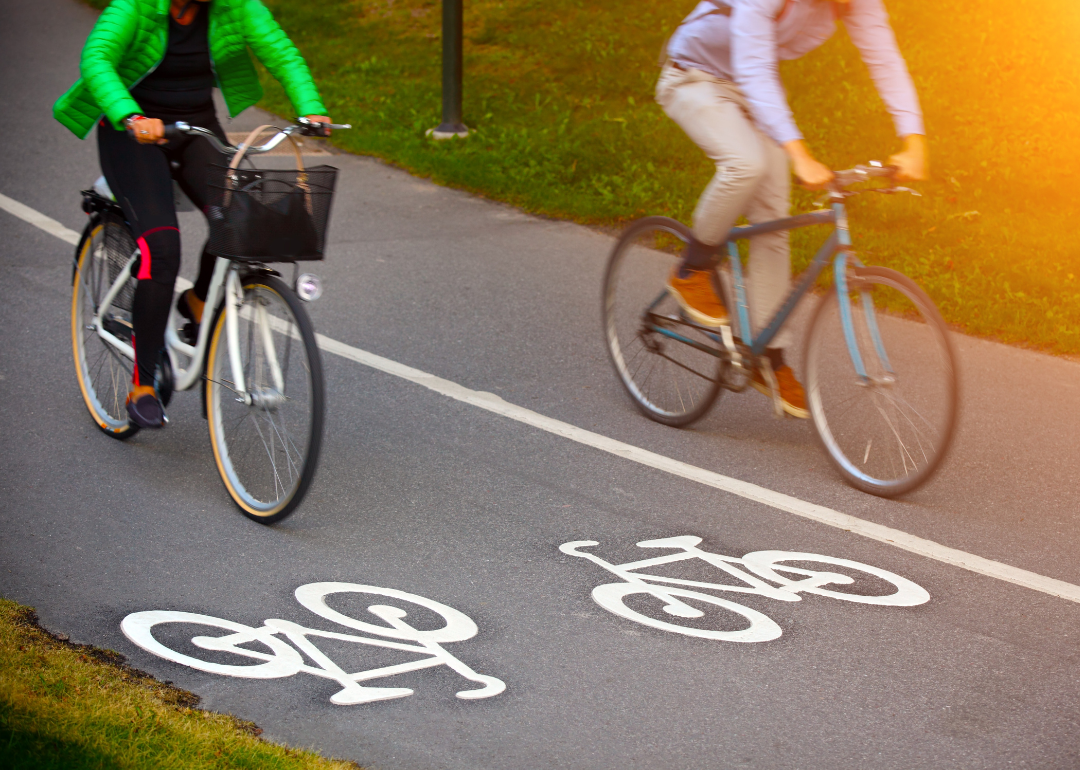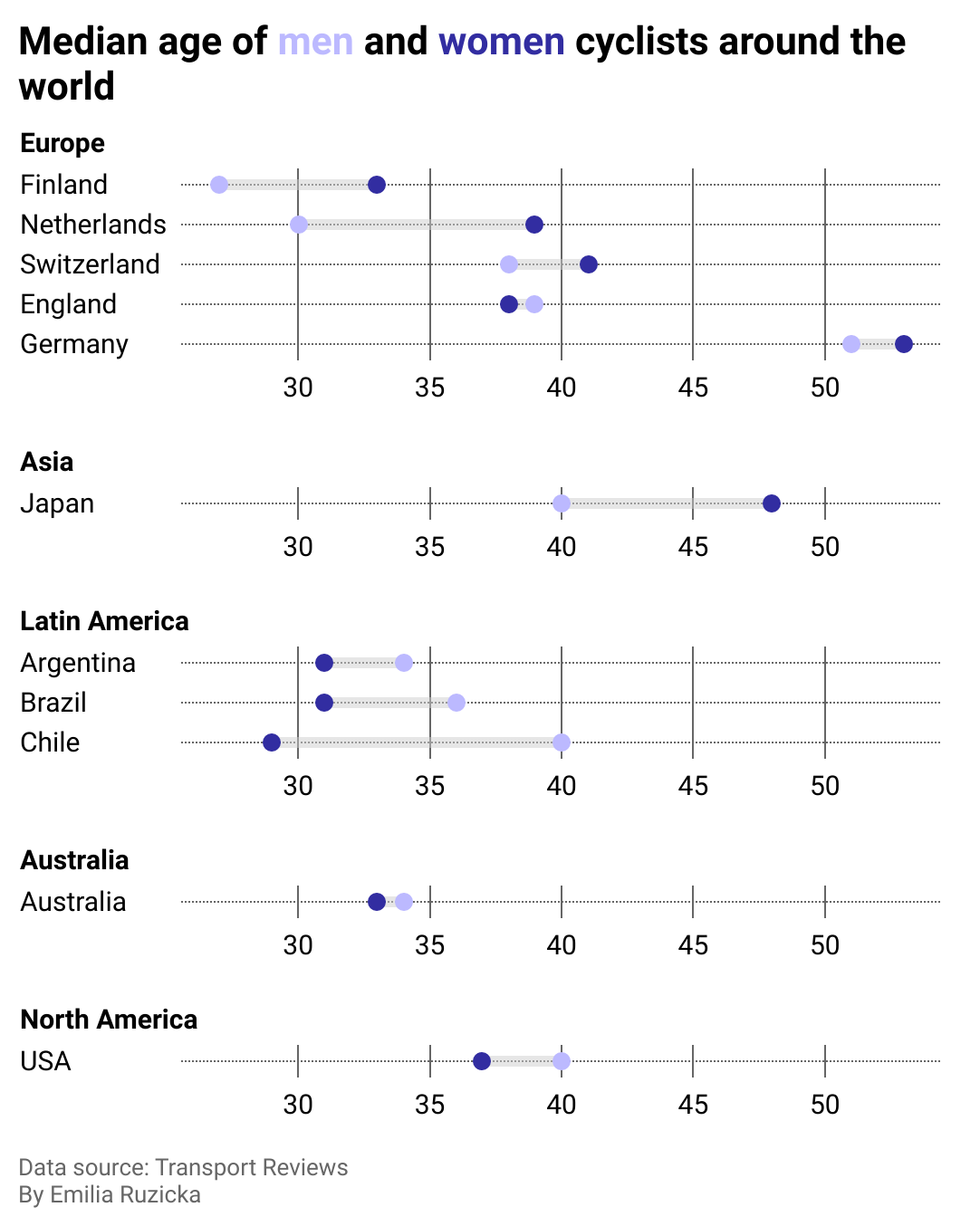Men are 3 times as likely as women to bike in the US. Here's how the demographics of cyclists break down

Canva
Men are 3 times as likely as women to bike in the US. Here’s how the demographics of cyclists break down
A person riding their bike to commute to work.
Who cycles, how often, how far, and for what reasons? To answer those questions and understand the demographics of cycling, a 2020 study looked at bicycle use in 17 countries, including the U.S. Using data from the study, which Transport Reviews published, Velotric broke down the gender demographics of cycling around the world.
How many people ride varies widely by country, from 2% in the United Kingdom to 26% in the Netherlands, where cycling is more gender balanced. Finland, Germany, and Japan also have high percentages of bikers. The lowest percentages are in Brazil and the U.S., where only about 1% of people bike.
The cities with the highest percentage of cyclists are Amsterdam and Osaka, Japan, followed by Tokyo, Munich, and Nagoya, Japan. It is important to note the study’s data separated people as strictly “men” and “women,” and thus did not capture the full spectrum of gender identities within its results.
The levels of cycling in a given area are affected by such policies as creating safe bicycle lanes, installing bicycle racks, and connecting lanes to other modes of transportation, as well as the distance people must travel.
Cycling is a low-impact form of exercise, which makes it a sustainable means of physical fitness in the later stages of life, though whether people continue to cycle as they age differs from place to place. Older people who bicycle can continue to enjoy health benefits such as improved protection from the likelihood of stroke, heart attack, certain cancers, and other serious illnesses. Furthermore, getting cars off the streets can provide environmental benefits. If the average person traded a car ride for a bike ride just once daily, they would reduce their transportation-based CO2 footprint by 67%.
Continue reading to find out more about how the demographics of biking break down.
![]()

Velotric
In most countries, women make up a third to a half of cyclists
If you want to know how much a country encourages cyclists, look for the number of women pedaling down the street. The study in Transport Reviews found that countries with the highest number of women riders also had the highest number of cyclists overall.
Qualifying the degree to which a society can accommodate or even support women specifically in this regard is difficult. There is, however, some evidence that bike use and availability in some regions, such as Africa, can help turn the tide on poverty and lack of opportunity, according to research by World Bicycle Relief.
According to the Transport Reviews study, societal markers such as women being disproportionately burdened with household labor and having a higher likelihood of frequently bicycling for noncommute-oriented reasons are contributing factors.
These insights don’t necessarily suggest that some countries are more “women-friendly” when it comes to bicycling than others. But when cycling made up more than 7% of modes of transportation, women made as many trips as men and sometimes even more.
Japanese women lead the way in the share of cycling, where some bicycle design accommodates shopping for groceries, ferrying children to school, and riding around a city in general. Japanese cities Osaka, Nagoya, and Tokyo had the highest proportion of cycle trips made by women.

Canva
Bike commuting represents 1.1% of all trips in the US
Two cyclists riding on a bike path.
While a contributing factor, the absence of U.S. women bicyclists relative to some other nations does not fully explain why Americans ranked low among all countries surveyed in the study.
As the coronavirus pandemic spurred more Americans to climb onto their bikes, some cities did help bolster the trend by adding bike lanes and other protective infrastructure. Still, at the same time, there have also been more accidents and deaths involving cyclists.
The number of preventable bicycle-related deaths rose 16% in 2020 and 44% in the last decade, reaching 1,260 avoidable deaths in 2020, according to the National Safety Council. The League of American Bicyclists has said the U.S. must do more to create safe and connected bicycle corridors.
The LBA culled data from the most recent Census Bureau American Community Survey and found that bike commuting has been steadily declining since 2014.

Velotric
Median age of cyclists varies widely by country and hemisphere
How long you continue to ride your bicycle can depend on where you live. The study found that cycling falls off dramatically in middle age in the U.K. and the U.S., but in the Netherlands, that drop begins only after age 70. Adults over 60 are underrepresented everywhere but do better where levels of cycling are high.
As for younger riders, U.S. workers ages 16 to 24 are more likely to ride to work, according to the Census Bureau. Approximately 1% of younger workers commuted by bicycle compared to 0.7% of workers ages 25 to 44 and 0.45% of those aged 45 and older. In general, the median age for women cyclists tends to be higher than the median age for all cyclists in the Eastern Hemisphere and lower than the median age for all cyclists in the Western Hemisphere.
This story originally appeared on Velotric and was produced and
distributed in partnership with Stacker Studio.
